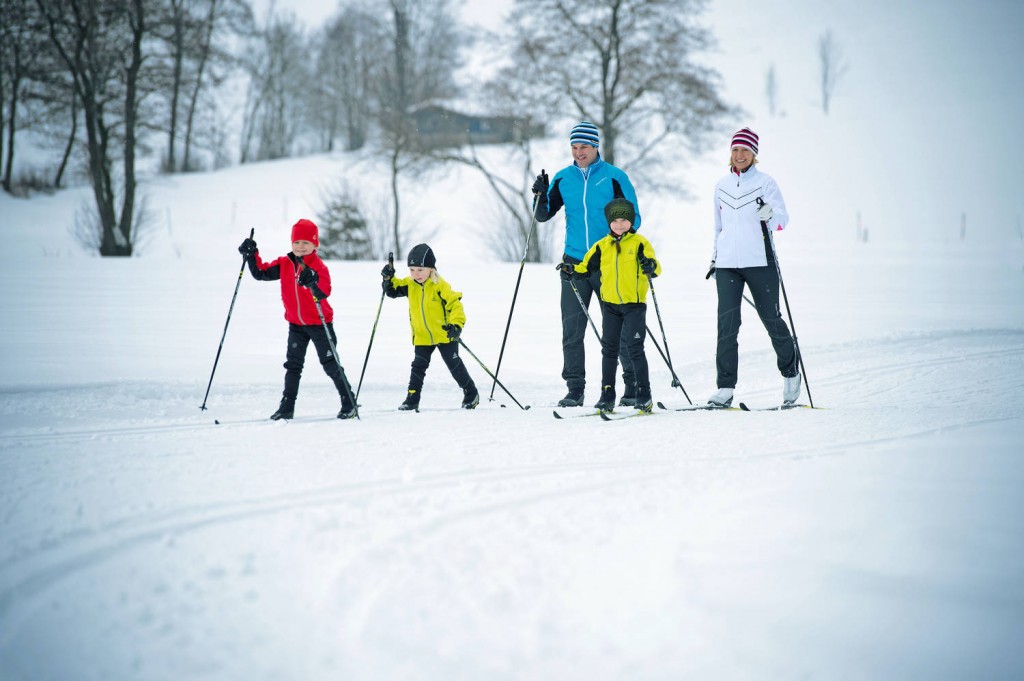With record breaking snowfall (and now climbing temperatures), this is the year to get out and enjoy some winter activities. Cross country skiing and snowshoeing are two of our favorite activities for Wisconsin winters. They’re great to enjoy nature, break out of the house with the family, fight the winter blues, and get your blood pumping.
What You’ll Need:
Skis, bindings, boots & poles
Breathable outdoor clothing
Types of Skiing:
Classic skiing is the most common form of nordic skiing, and is a great place to start if you are new to cross country skiing. Performed primarily in ski areas with groomed trails, classic skiers propel themselves forward in pairs of groomed tracks or grooves cut into the snow. If touring the outdoors at a leisurely pace in more your speed, look no further than a pair of classic XC skis.
Skate skiing is a faster, more endurance based form of cross county skiing. Done only on groomed trails, skiers propel themselves forward in a technique similar to ice skating with their skis angled out from each other. Those seeking a higher level of exercise or competition would likely enjoy the benefits of skate skiing over traditional, classic style skiing.
Backcountry skiing is the best way to get out and explore the many pristine wooded areas found throughout Wisconsin and beyond. Skied in a similar style to classic skis, backcountry equipment is designed to be sturdier and perform better in deep snow over uneven surfaces. Wider ski widths, stronger bindings, and boots with more aggressive soles for hiking all contribute to skiing the areas far less traveled.
Where to Go:
Nine Mile Recreation Forest boasts over 4,900 acres and has nearly 20 miles of nordic ski trails, with options suitable for beginners to experts. Nightly at 9, nearly 4 miles of trail is lit. They have a chalet with a warming wood stove, bathrooms, water fountains, and more. Passes are required & maps are available. (You’ll find over 4 miles of groomed snowshoe trails as well!)
Sylvan Hill Recreation Area offers 4.9 km of nordic ski trails (and 1.2 km of snowshoe trails) for beginner or intermediate skiers. They encourage a $3 donation at the trailhead.
Big Eau Pleine Park trails do not require trail passes to use their 15k of ski trails (but fair warning: the trails are no longer groomed). Again, beginner to intermediate skiers may enjoy this destination.
What to Wear:
We have an entire department of clothing made specifically for nordic skiing and snowshoeing. Below we’ll highlight the features you’ll expect to find in this department, and you can determine whether or not you have items at home that will work.
Windproof
One of the main features of nordic ski/snowshoe/outdoor running clothing is it’s wind proofing. This will cut the chill when you’re moving forward, keeping you protected from the toughest part of winter weather.
Lightweight
Get out on your skis and it won’t take you long to find out you warm yourself up very quickly. If you head out in your down parka, you’ll be ready to head home in about ten minutes. Because you’re protected from the wind, you’ll stay more comfortable than you’d expect with lighter weight clothing.
Moisture Wicking
Nordic skiing and snowshoeing are aerobic activities. You may find yourself perspiring from the effort you’re putting into your activity, so you want to be sure your clothing will perform. If you head out with cotton on, you’ll head back in frozen because the cotton soaks up your sweat and holds it against your skin. The brands we carry are made from wool or synthetics including polyester & polyester blends, all of which immediately send moisture away from your skin and allow it to evaporate. They’re also fast drying, often odor-resistant, and because of their moisture movement technologies, help regulate your body temperature, thus avoiding warm spikes & chills.
Layered
Your ideal outfit would look like this: a wicking base layer next to skin, a mid layer of insulation on the extra cold days, and a windstopping outer layer. You’ll want each layer to continue the process of moving moisture away from your skin. (Wearing a moisture-wicking base layer doesn’t do a whole lot of good if that moisture meets a cotton sweatshirt on the other side!) Layers of lighter weight outerwear will keep you more comfortable than a heavy jacket while also providing options to shed layers as you warm up.
With Accessories
We also suggest wearing a headband or hat, gloves, and socks (but you already knew that!). Just like with base layer, you never want to wear cotton socks in your boots, but should opt for something like -our personal favorites-, Smartwool socks. (Read the Smartwool story here, then try a pair for yourself.)
So…. GO!
You have plenty of time to get out and give it a shot this year. The 30 degree temps, deep snow cover & sunshine on your face will make you glad you got off the couch. If you’re in the market for ski or snowshoe rentals, check out our rental information or give us a call. Our trained staff will talk you through any other questions you might have & make sure you’re comfortable before you leave the shop. That’s why we’re here.
Can’t wait to see you out there.


